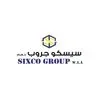Unlimited Users
Support unlimited team members with comprehensive user management and role-based access control
For SCAFFOLDING & FORMWORK Companies
Support unlimited team members with comprehensive user management and role-based access control
Live analytics and reporting dashboards for informed decision making and performance tracking
Complete inventory tracking, warehouse management, and automated stock control system
Digital scaffold planning, design tools, and comprehensive safety compliance management
Streamlined workflows with intelligent automation, reducing manual tasks and errors
Real-time location tracking, asset monitoring, and comprehensive fleet management capabilities
Trusted By:
🇺🇸 North America🇪🇺 Europe🇸🇦 Middle East🌍 Africa🇦🇺 Australia















































































































Take back control of your scaffolding and formwork asset management, one smart decision at a time
Helping out, one job at a time.
Helping out, one job at a time.
Standard Systems
Light Duty Systems
Climbing Systems
Fire-Resistant Systems
Radiation-Safe Systems
Heavy-Duty Industrial
Turnaround Projects
Ongoing Access
Infrastructure Projects
Municipal Projects
Corrosion-Resistant
Underground Systems
Height Access Systems
Temporary Structures
Production Support
Conservation Work
Complete scaffolding services for: Construction, Residential, High-Rise Construction, Petrochemical, Nuclear, Power Generation, Plant, Facilities, Bridge & Highway, Water Treatment, Marine & Offshore, Mining Operations, Telecommunications, Events & Entertainment, Film & Television, Heritage Restoration
The road to success is always under construction
Move your business online and in the cloud with ease
Helping scaffolding and formwork companies achieve their goals
Get visibility into asset locations and movement. Enhance asset control, minimize stockouts, optimize resource allocation and boost operational efficiency.
With safety inspections, alerts, and digital signature functionality, you can ensure compliance, prevent accidents, and streamline documentation processes effortlessly
Empower your business with precision, growth, optimization, profitability and success by automate your processes, improve efficiency, increase productivity and save valuable time and resources.
Cloudscaff is not just a means of support, but a tool for growth and progress
CLOUDSCAFF is a comprehensive SaaS (Software as a Service) solution designed specifically for scaffolding and formwork companies. It helps businesses to document, track and manage every aspect of their operations in a streamlined manner. This includes tasks such as lead management, project management, inventory management and much more. To access and utilize CLOUDSCAFF only requires an internet connection and can be used on all devices and operating systems.
CLOUDSCAFF is an all-in-one solution that offers a wide range of tools for scaffolding and formwork companies to utilize to streamline their operation. Each tool can be used as standalone options or as part of a comprehensive, end-to-end system. In addition, CLOUDSCAFF integrates seamlessly with various software packages, though the standard subscription only includes accounting packages.
Cloudscaff is updated on a daily basis to optimize and streamline scaffolding and formwork companies workflow. We pride ourselves on listening to our users, making the necessary updates that are required to make their businesses more efficient.
Cloudscaff is a cloud computing software that works on any device as long as you are connected to the internet. Please see our Install Page to see how you can download Cloudscaff to your laptop, desktop or mobile device. Alternatively you can use Cloudscaff directly through your internet browser such as Chrome or Safari.
See how our features can transform your scaffolding operations. Schedule a personalized demo today.
Questions? Call us at +1 (956)-622-7852
Available Monday-Friday, 8AM-5PM EST